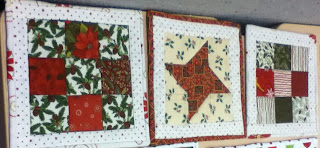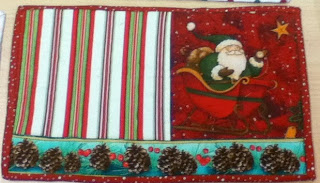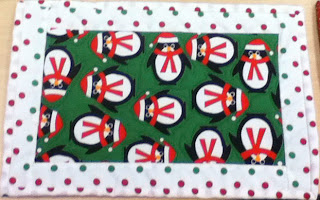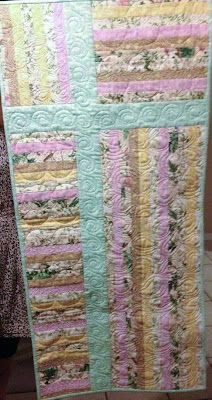I have a soft spot in my heart for political activism. I really admire people who work tirelessly to protest, write or blog for a cause that they believe in. I am generally too much of a cynic and a chicken to take to the streets but if there’s something that I can do to help through quilting, then that’s a different story. Being my mother’s daughter (she was a feminist to her core!) I find issues affecting women particularly moving. You may have seen my blogs concerning the “
Walking with our sisters collective art project”.
Here’s a very different project. Barbara Brackman is a quilt historian and author of many books and blogs. One of her projects,
Grandmother’s Choice, started over a year ago. I’ve been following it almost since the beginning but I only started making the blocks about a week ago. Every week she published a block and included all kinds of amazing historical facts about one aspect of women’s rights. Most of the history is American but there are tidbits about England, Canada, Australia and New Zealand.
The first block,
Grandmother’s Choice, encourages us to look at our grandmothers or great-grandmothers’ lives to see how having the right to vote might have affected them. In the US, many states gave and took away women’s right to vote. It was only in 1920, when the right to vote became a part of the U.S. constitution, that women were guaranteed their right to vote.
In Canada, some women, were given the right to vote from 1917. It seems that it was in January 1, 1919 that the qualifications of both men and women to vote became the same (i.e. British subjects of a certain age). Even if, in theory women and men were both allowed to vote, this right was far from universal. It wasn't until 1950 that the Inuit were given the right to vote; and status Indians didn't get this right until 1960! (
Canadian Encyclopedia)
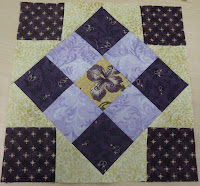 |
| Block #3 - Union Square: Red for Rebellion |
Block number 3,
Union Square: Red for Rebellion acquaint us with England’s National Union of Women’s Suffrage Societies, a group committed to attaining the vote for British women. They realised that marching in protest could be very effective. Their colours were originally white with red accents; red being the colour of rebellion.
 |
| Block # 5 - New Jersey: Suffrage Pioneer |
My next block is the fifth in the series:
New Jersey: Suffrage Pioneer. As in Canada where provinces were allowed to give women the right to vote on the provincial level, in the U.S., an individual state could give women the right to vote if the issue hadn’t been addressed at the federal level. When the New Jersey constitution was adopted in 1776, voters were defined as propertied adult residents of the state. By the early 1800’s, it seemed that the percentage of women voters was “alarming” and the state changed its laws to allow only free, white men over the age of 21 to vote.
This block was created to remind us that at one time, the right to vote could be given as well as taken away. In the 19th amendment of the US constitution, "The right of citizens of the United States to vote shall not be denied or abridged by the United States or by any State on account of sex."
 |
| Block # 7 - Alice's Star |
My fourth block this week is the seventh in the series:
Alice’s Flag. Alice Paul created a Ratification Banner where she would sew a star every time that one of the states ratified the 19th Amendment. To take effect, the amendment required that 36 of the 48 states vote in favour. This finally happened in 1920.
I’ll be creating more of the blocks in the Grandmother’s Choice project. I will also do some research about women’s rights and issues in Canada at that time.
Here are my 4 blocks to date.
 |
| Blocks completed to date |
What I learned:
- The patterns for each block and the measurements of the pieces are included on the website but only the more difficult patterns have instructions. I realise that I know more about quilting than I thought.
- I sure know more about the history of women’s issues.
In this post, all of the information about women voters was taken from the Grandmother’s Choice website unless specifically stated.
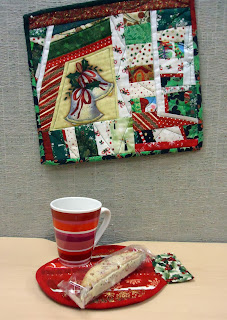


 Update - I made 2 more Christmas Ornament Mug Rugs, in green this time. I was able to find bias tape and it did help somewhat with the flatness. I did make one of them larger but then I forgot to trim it! Here are the results:
Update - I made 2 more Christmas Ornament Mug Rugs, in green this time. I was able to find bias tape and it did help somewhat with the flatness. I did make one of them larger but then I forgot to trim it! Here are the results:


